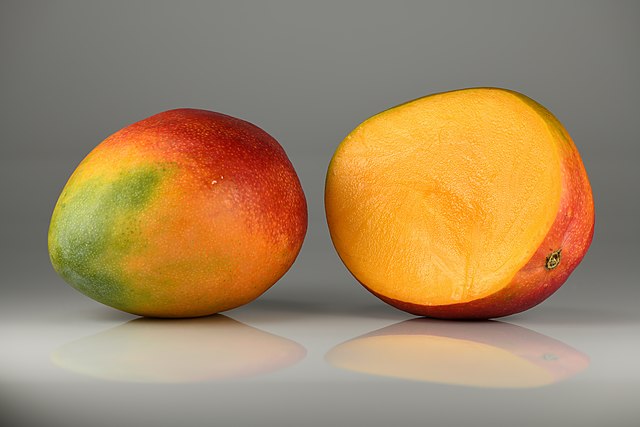The Senegal mango campaign in 2024 has begun end May amid a decrease in production due to fireflies on orchards.
In its May 3, 2024 phytosanitary meeting, the Plant Directorate of Senegal (DPV) recounted a drop of 1.9% or 314 tonnes in the 2023 season. The decrease could continue in the 2024 season although high-profile orchard inspections and plant treatment regimes are underway.
Senegal shipped 16,000 tonnes of mango in the 2022-23 season, 1/3 less than the 21,000 tonnes in the 2021-22 period. That in turn was yet another depreciation from the 2020-21 volume that had clocked at 24,000 tonnes.
The mango season in Senegal runs mid-May through July and culminates with supplies from the strategic Casamance region.
Production By Region
Casamance on the southern banks of the Gambia river produces 55% of the national output of 100,000 to 150,000 tonnes.
Niayes in northwestern Senegal on a horticulture-rich sand dune-banked coastal strip accounts for 35% of mango production in Senegal.
This is even as Sine-Saloum on River Saloum’s mouth at Senegal’s north Atlantic coast produces a part of the remaining 10%. It shares this fraction with M’baor, a tourism region south of the capital, Dakar.
Most of the farmers in these three regions are small-scale whose production mainly fills local market demand. Only a minor portion of their harvest at between 13% and 20% goes into export.
Fruit fly Menace Versus small-scale growers
The bulk of production in the three regions is by family growers, who lack means to fight fruit flies.
According to DPV in its May 3, 2024 meeting, phytosanitary controls are under way to control further fruit fly spread.
DPV has already extracted and tested a 100% organic protection pesticide that will help combat the infectious insect. Besides, the parastatal is training agricultural inspectors to monitor and treat mango orchards continuously for a period of 12 months.
Mango Export Levy
Besides monitoring orchards, DPV is also exploiting the economic potential of mango exports by inspecting and levying them at packing stations.
The current levy charged on each tonne of mango exports in Senegal is between 10 and 15 CFA Francs ($0.016 and 0.025).
According to ITC, the export prices of mangoes from Senegal hovered between $0.58 in 2019 and $1.05 per kg in 2022.
Thus, as Senegal looks to a new mango season on a low production note, below are statistics on the sector’s performance.
Senegal Mango Statistics
Mango is an important fruit in Senegal and it represents 63% of the total area under fruits in the country. Four major areas (Casamance, Niayes, Sine-Saloum and M’baor) hold up nearly all area under mango in Senegal, totaling 25,000 hectares as of 2021.
Despite production margin above 100,000 tonnes, Senegal exports only a portion of less than 24,000 tonnes (2021). 88,000 tonnes or 65% of the mango crop in Senegal is under threat yearly from wastage and fruit fly effects. And how does Senegal’s mango production compare globally? Senegal produces 0.3% of the world’s mangoes, but leads neighbors Mali (0.2%) and Guinea (0.1%) regionally in world output.
